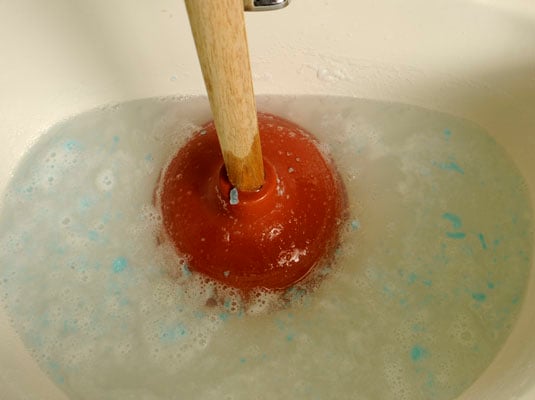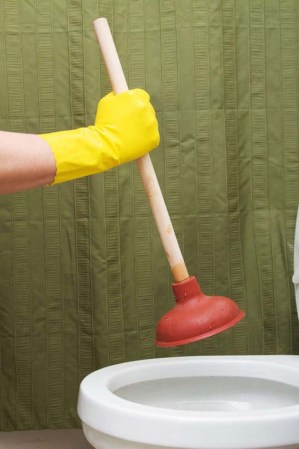Tips to Successfully Utilize Plunger and Drain Cleaner: Professional Tips
Tips to Successfully Utilize Plunger and Drain Cleaner: Professional Tips
Blog Article
We've encountered this article on Tips on How to Effectively Use a Plunger down the page on the web and felt it made perfect sense to relate it with you on this page.

Intro
Proper maintenance of family drains is essential for stopping obstructions and making sure smooth water circulation. One of the secret tools in every property owner's toolkit is the plunger, together with various drain cleaners created to take on stubborn obstructions properly. This write-up explores how to use bettors and drain cleansers properly to maintain your drains flowing easily.
Area 1: Comprehending Plungers
Types of Plungers
There are several kinds of bettors offered, each designed for different sorts of drains and blocks. One of the most typical types consist of mug bettors, flange bettors, and accordion plungers.
How Plungers Work
Plungers work with the principle of creating pressure and suction to displace obstructions. When correctly used over a drainpipe, they produce a vacuum cleaner that can pull out particles or separate clogs.
Picking the Right Bettor
Selecting the appropriate plunger depends upon the sort of drain and the nature of the clog. Mug plungers are excellent for sinks and bathtubs, while flange plungers are much better suited for toilets due to their design.
Typical Mistakes with Plungers
Staying clear of these mistakes ensures effective plunging: improper seal around the drain, insufficient force, and not clearing bordering particles.
Section 2: Utilizing Plungers Properly
Preparation
Prior to diving, make sure the bettor covers the drain totally and creates a limited seal. Clear any noticeable particles around the drain opening.
Strategy
Begin with gentle plunging movements to construct suction. Boost pressure gradually, making use of a steady rhythm. Repeat as needed up until the drain removes.
Repairing Tips
If diving doesn't work, try changing the seal, applying petroleum jelly for a far better seal, or making use of a various kind of bettor.
Area 3: Comprehending Drain Cleaners
Types of Drain Cleaning Company
Drain pipes cleaners can be chemical or enzymatic. Chemical cleansers make use of strong chemicals to dissolve obstructions, while chemical cleansers make use of natural enzymes to break down raw material.
Just How Drain Cleaning Company Job
Chemical cleansers react with blockages to dissolve them, while enzymatic cleansers break down natural products like hair and oil without harming pipes.
Safety and security Considerations
Always use handwear covers and eye security when using chemical drain cleaners. Guarantee ample air flow and comply with supplier directions very carefully.
Eco-Friendly Alternatives
Think about utilizing vinegar and baking soda or enzyme-based cleansers for environment-friendly choices that are much safer for pipelines and the atmosphere.
Area 4: Utilizing Drain Cleaners Effectively
Application Methods
Pour chemical cleaners straight right into the drainpipe opening. Permit them to benefit the recommended time prior to purging with hot water. Enzymatic cleaners should sit over night.
Safety measures
Prevent mixing different types of cleansers, as this can produce hazardous fumes. Never make use of chemical cleaners combined with a bettor, as splashing can occur.
Handling Stubborn Blockages
For relentless clogs, take into consideration utilizing a pipes snake or calling a specialist plumbing professional to prevent damage to pipes.
Verdict
In conclusion, understanding just how to utilize bettors and drainpipe cleansers efficiently is necessary for preserving healthy plumbing systems. By picking the right tools and strategies, home owners can take on small blockages and prevent major pipes concerns down the line.
5 Steps on How to Use a Plunger Effectively
Creating a Seal: Place the rubber cup of the plunger firmly over the toilet drain hole to create an airtight seal. This seal is crucial to prevent air from escaping and ensure effective plunging.
Plunge Gently: Gently press the plunger down to compress the air inside without causing splashing. This careful action sets the stage for effective unclogging without creating a mess.
Maintaining Pressure: Consistently apply pressure to the plunger while pushing and pulling it up and down. This sustained pressure generates the force needed to dislodge the clog.
Breaking the Clog: Continue plunging until you feel the clog release. Look for the water to start draining, indicating successful removal of the blockage.
Flushing and Cleaning: After clearing the clog, flush the toilet to confirm it's working properly. Clean the plunger with warm, soapy water and disinfect it for future use to maintain hygiene.
Additional Tips on How to Correctly Use a Plunger
if you encounter resistance, add some water to the bowl to create better suction;
check the plunger for any rubber cracks to ensure it's in good condition;
exercise patience and persistence, as certain clogs might need multiple attempts.
Mistakes to Avoid when Using Toilet Plunger
avoid using excessive force, as it may damage the toilet;
don't rush the process; take your time to ensure a proper seal and pressure;
never use a plunger if you've recently used chemical drain cleaners
Conclusion
Mastering the art of how to properly use a plunger is a valuable skill for every homeowner. By employing the correct techniques, you can effectively address clogs and ensure your toilet functions smoothly. Patience, persistence, and proactive in maintaining your plunger's hygiene are key to success in this endeavor.
Armed with these skills and principles, you can confidently handle plumbing issues as they arise, promoting a well-functioning and hygienic home environment.
https://homealliance.com/blogs/how-to-effectively-use-a-plunger-the-ultimate-guide

Application Methods
Pour chemical cleaners straight right into the drainpipe opening. Permit them to benefit the recommended time prior to purging with hot water. Enzymatic cleaners should sit over night.
Safety measures
Prevent mixing different types of cleansers, as this can produce hazardous fumes. Never make use of chemical cleaners combined with a bettor, as splashing can occur.
Handling Stubborn Blockages
For relentless clogs, take into consideration utilizing a pipes snake or calling a specialist plumbing professional to prevent damage to pipes.
Verdict
In conclusion, understanding just how to utilize bettors and drainpipe cleansers efficiently is necessary for preserving healthy plumbing systems. By picking the right tools and strategies, home owners can take on small blockages and prevent major pipes concerns down the line.
5 Steps on How to Use a Plunger Effectively
Creating a Seal: Place the rubber cup of the plunger firmly over the toilet drain hole to create an airtight seal. This seal is crucial to prevent air from escaping and ensure effective plunging. Plunge Gently: Gently press the plunger down to compress the air inside without causing splashing. This careful action sets the stage for effective unclogging without creating a mess. Maintaining Pressure: Consistently apply pressure to the plunger while pushing and pulling it up and down. This sustained pressure generates the force needed to dislodge the clog. Breaking the Clog: Continue plunging until you feel the clog release. Look for the water to start draining, indicating successful removal of the blockage. Flushing and Cleaning: After clearing the clog, flush the toilet to confirm it's working properly. Clean the plunger with warm, soapy water and disinfect it for future use to maintain hygiene. Additional Tips on How to Correctly Use a Plunger
if you encounter resistance, add some water to the bowl to create better suction; check the plunger for any rubber cracks to ensure it's in good condition; exercise patience and persistence, as certain clogs might need multiple attempts. Mistakes to Avoid when Using Toilet Plunger
avoid using excessive force, as it may damage the toilet; don't rush the process; take your time to ensure a proper seal and pressure; never use a plunger if you've recently used chemical drain cleaners Conclusion
Mastering the art of how to properly use a plunger is a valuable skill for every homeowner. By employing the correct techniques, you can effectively address clogs and ensure your toilet functions smoothly. Patience, persistence, and proactive in maintaining your plunger's hygiene are key to success in this endeavor.
Armed with these skills and principles, you can confidently handle plumbing issues as they arise, promoting a well-functioning and hygienic home environment.
https://homealliance.com/blogs/how-to-effectively-use-a-plunger-the-ultimate-guide

Do you appreciate reading about A Guide to Plungers (and How to Use Them)? Try leaving a short review further down. We'd be delighted to hear your opinion about this post. We hope that you visit us again before long. If you enjoyed our post please consider to pass it around. Thank you for your time spent reading it.
Book With Us Today! Report this page